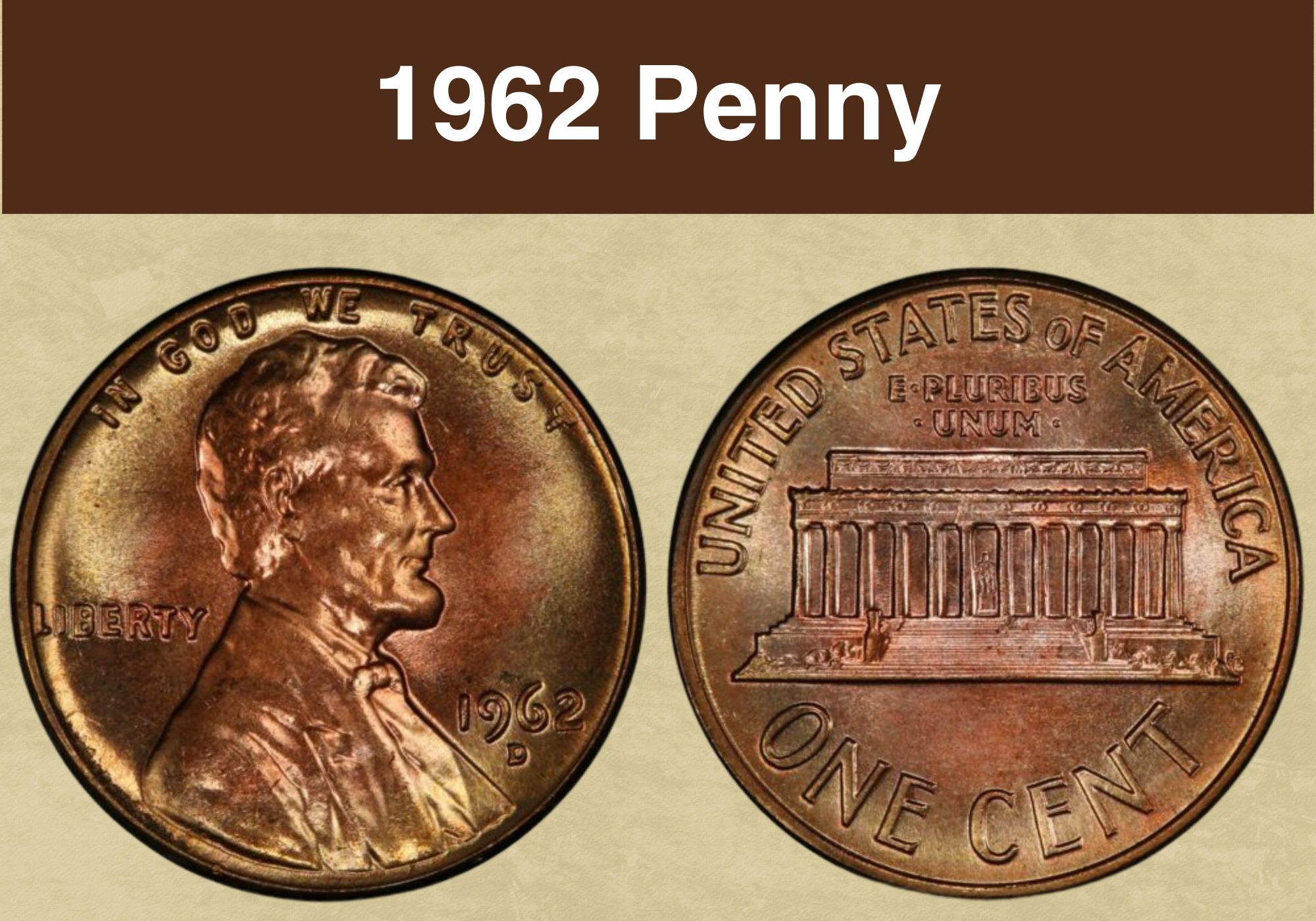
Coin Value Contents Table
The penny minted in 1962 is known by the same nickname as modern cents – the Lincoln penny. But is it worth more than its face value?
That’s what we’re here to find out. We’re going to look at the 1962 penny value. We’ll discover what factors can make a big difference to how much an individual coin is worth. And we’ll investigate the history and design of the Lincoln penny along the way.
So if you’re ready to find out more, let’s get started!
1962 Penny Value Chart* |
|||
| Mint mark | MS63 | MS65 | MS67 |
| 1962 (P) No Mint Mark Penny Value | $7 | $20 | $350 |
| 1962 D Penny Value | $3 | $20 | $1300 |
| PR63 | PR65 | PR67 | |
| 1962 (P) No Mint Mark Proof Penny Value | $7
Cameo: $12 |
$12
Cameo: $18 |
$24 Cameo: $30 Deep cameo: $40
|
*Values shown are for coins graded red (RD).
History of the 1962 Penny
The 1962 penny continued a series that had begun in 1909. That year marked the centenary of the Abraham Lincoln’s birth, and a new coin was commissioned to celebrate the occasion.
The choice of a cent for the former President’s coin might seem strange. But the Lincoln penny was a watershed moment in US numismatic history. It was the first time any coin had ever borne the image of a real person.
Until then, the idea of honoring a real human being in this way was considered unseemly. Instead, the images chosen for the “heads” sides of coins had been those of legendary figures – particularly Lady Liberty.
But as the centenary of Lincoln’s birth approach, the public mood changed. The idea of honoring the former president in this way gained strong support.
The result was the Lincoln penny. The portrait on the obverse is largely the same as that which still appears on the cent today. But the reverse has undergone several changes over the years.
The first Lincoln pennies had a reverse with a simple image of two ears of wheat. In 1959, that changed to a picture of the Lincoln Memorial in Washington DC. And that’s the same image you’ll find on the pennies struck in 1962.
Those coins did, however, have their own reason for being noteworthy. 1962 was the final year that the penny was made of bronze – 95 per cent copper, with the remainder a mixture of tin and zinc.
From the latter part of that year, the tin was removed from the recipe. That meant that pennies from then on are more properly described as brass. You may also hear them described as “gilding metal”. The copper percentage remained the same at 95 per cent, but the rest was zinc.
The change was designed to make the coins easier to strike, without affecting how durable they were. It was authorized by Congress in September 1962.
Also read: 12 Most Valuable Lincoln Penny Worth Money
Features of the 1962 Penny
The Obverse of the 1962 Penny
The portrait of Lincoln is the dominant image on the 1962 penny. And it will be very familiar – it’s almost the same as the portrait on today’s cents.
It was the work of an artist named Victor David Brenner, who hailed from Lithuania (at the time, part of Russia). He emigrated to the USA in 1890, and later studied in Paris. His portrait of Lincoln is probably the best known of his work. And it’s the longest-running design in the US coin history.
But things didn’t go entirely according to plan for Brenner. He’d originally proposed signing the portrait, but was told that would be unacceptable. So instead he suggested adding his initials to the reverse.
Even that, however, caused controversy. Some felt the initials were too large and amounted to advertising. And because reducing their size would have taken more time, the Mint decided to remove them altogether.
Brenner’s protests were ignored, and it wasn’t until 1918 that his initials were reinstated. This time they appeared on the obverse, on the cut-off at the bottom of Lincoln’s portrait. That’s the same place you’ll find them on the 1962 penny.
The other parts of the coin’s design are familiar too. The motto “IN GOD WE TRUST” is at the top of the coin, the word “LIBERTY” is on the left, and the date is on the right.
Pennies struck in Denver will also have a small D – the mint mark. This can be found just below the date. If there’s no letter, it means your penny was struck in Philadelphia.
The Reverse of the 1962 Penny
The back of the 1962 penny carries the image of the Lincoln Memorial in Washington DC. This had been first used in 1959. The change from the previous image of two ears of wheat had been made to mark the 150th anniversary of Lincoln’s birth.
Look closely, and you’ll see the faint image of Lincoln’s statue positioned at the center of the portico. It’s this which makes the Lincoln Memorial penny rather unusual. It’s one of only a few US coins to have an image of the same person on both sides.
Below the Memorial are the words “ONE CENT”. They’re inscribed in the largest font of any of the legends on this side of the coin. And they curve parallel to the lower coin edge.
Immediately above the Memorial, in much smaller font, is the Latin motto “E PLURIBUS UNUM”. This means “From the many, one” and refers to the creation of the USA from individual states.
And at the very top of the coin, parallel with the edge, is the name of the country.
Other Features of the 1962 Penny
1962 saw legislation passed to change the composition of the penny. Until then, the coins had been made from 95 per cent copper, with the remaining 5 per cent a mixture of tin and zinc.
But that September, Congress authorized the removal of the tin. Technically, this changed the coins from bronze to brass.
But both the measurements and weight of the bronze and brass pennies are identical. Both are 19 millimeters in diameter and weigh 3.11 grams. So it’s not possible to distinguish brass from bronze 1962 pennies.
The copper content remained the same too, at 95 per cent. And because copper changes in color as it’s handled and exposed to the air, the color of individual pennies changes too. That can have big implications for the value of an individual coin.
All other things being equal, a coin graded red will be worth more than one graded red and brown. And a red and brown coin will be worth more than one graded brown.
To be classified red, a coin must have the red shade of new copper over at least 95 per cent of its total surface area. A coin that’s brown over at least 95 per cent of its surface is graded brown.
This YouTube video from CoinOpp provides more guidance on how to grade the color of Lincoln pennies.
Also read: 13 Most Valuable Wheat Penny Worth Money
1962 Penny Grading
| # | Grade |
|---|---|
| 1 | Basal State-1 |
| 2 | Fair |
| 3 | Very Fair |
| 4, 5, 6 | Good |
| 7, 8, 10 | Very Good |
| 12, 15 | Fine |
| 20, 30 | Very Fine |
| 40 | Extremely Fine |
| 50 | About Uncirculated |
| 60 | Mint State |
| 65 | Mint State |
| 70 | Mint State |
Please check our grading guides to know your coin scale, It’s the necessary step to know the exact value of your coin.
Check out now: How to Grade Lincoln Wheat Penny?
1962 Penny Value Guides
1962 No Mint Mark Penny Value
1962 saw the Mint facility at Philadelphia strike over 606 million pennies. So even now, more than sixty years on, they’re easy to find. If your penny doesn’t have a small “D” below the date, it’s a Philadelphia penny.
Their ready availability keeps values modest. Unless your coin has an interesting Mint error, it will usually need to be graded red to be worth more than its face value.
Red coins in uncirculated condition, however, are worth holding on to. Those are graded 60 or higher on the coin grading scale, which runs from 1 to 70. And the grade is given the prefix “MS”, which stands for “mint state”.
A 1962 Philadelphia penny at the lowest uncirculated grade, MS60, is worth perhaps a couple of dollars. That rises to $7 at MS63 and $20 at MS65, the lowest grade at which a coin is termed a “gem”.
But if you have a penny in exceptional condition, that value can be much higher. At MS67, a 1962 no mint mark penny is worth around $350. And finding a coin finer than that is very difficult.
The independent coin graders, the PCGS, have certified just a dozen coins at MS67+. It values those at $1,750 apiece.
And the finest 1962 Philadelphia penny known to exist is a sole coin graded MS68. That’s valued today at $10,000.
1962 D Penny Value
If your penny has a “D” below the date, it was struck at the Mint facility in Denver. Denver struck far more pennies than Philadelphia – almost 1.8 billion of them.
But despite that, there are fewer 1962-D pennies at higher grades than their no mint mark counterparts. And in fact, this year’s mintage of Denver pennies is the second most difficult of all to find coins graded MS66 and above. Only the 1963-D mintage has fewer high quality gems on offer.
At lower mint state grades, prices are comparable to the Philadelphia equivalents. A 1962 Denver penny graded MS63 red is worth $3, while one graded MS65 will be around the $20 mark.
But at MS67, that value rises to around $1300. Although this is the finest known grade, the PCGS has certified 14 coins at that level, and the NGC 38.
Values fluctuate. A 1962 Denver penny graded MS67 red by the PCGS sold at auction in January 2023 for $750. A coin at the same grade certified by the NGC sold three months later for just $216.
1962 (P) No Mint Mark Proof Penny Value
The Philadelphia Mint facility struck both business strike and proof pennies in 1962. The latter used highly polished planchets and special dies. The resulting coins were aimed at collectors, and over 3.2 million were produced.
The large mintage and their status as collectors’ items mean that it’s easy to find 1962 proof pennies in great condition today. And that means it’s possible to add an attractive coin to your collection without spending too much money.
Proofs graded PR63 red sell for around $7. And even at PR67, the value rises to only around $24.
Some proofs are also designated cameos or deep cameos. These terms are used for coins that have an attractive contrast between frosting on the raised areas and reflective flat parts. If the contrast is very strong, the coin is a deep cameo.
Cameos and deep cameos attract stronger prices. But you can still find them for relatively modest outlays. A cameo 1962 proof penny graded PR67 is worth around $30. A deep cameo designation will be worth a couple of dollars more.
The best-in-class coins, however, command far higher prices. The auction record for a 1962 proof penny was set in 2005 for a deep cameo graded PR69. At the time, it was one of 28 coins at that grade, with none finer. And it sold for $2,559, including the buyer’s premium.
Also read: 17 Most Valuable Indian Head Penny Worth Money
Rare 1962 Penny Errors List
1962 D Penny, Full Brockage Reverse
One of the 1962 Denver pennies to have gone into circulation was an extremely interesting coin. It had what’s known as a “full brockage reverse”. Instead of the Lincoln Memorial that should have been on the back of the coin, all you could see was the reverse of Lincoln’s portrait.
It happened because the previous coin got stuck to the reverse die. And when that die struck the coin, a mirror image of the previous coin’s obverse was imprinted on the planchet.
Despite the coin’s unusual appearance, it seems no-one who handled it recognized its value. By the time it came to light, it had significant signs of wear and tear. And it was graded by the PCGS at AU53 – the letters stand for “about uncirculated”.
It sold at auction for over $500.
1962 D Penny, Struck Fragment
Very occasionally, something that isn’t a planchet finds its way into the coin press.
In Denver in 1962, a fragment of metal was struck. The resulting “coin” was an irregular shape and weighed only 1.2 grams.
But it was a clean strike, and in good condition. The PCGS graded it MS64. And its rarity meant that when it was presented at auction, it sold for over $1,000.
Take a look at this YouTube video from Couch Collectibles for more examples of errors amongst 1962 pennies.
Also read: 11 Most Valuable Wheat Penny Errors
Where to Sell Your 1962 penny ?
Now that you know the value of your coins, do you know where to sell those coins online easily? Don’t worry, I’ve compiled a list of these sites, including their introduction, pros, and cons.
Check out now: Best Places To Sell Coins Online (Pros & Cons)
FAQs
How much is a 1962 penny worth?
That depends on the color and grade of the penny. Generally speaking, brown or red and brown pennies from 1962 will only be worth their face value. But red coins in great condition can be worth much more.
And coins that have interesting Mint errors are worth a premium.
The finest known example of a 1962 Philadelphia penny is graded MS67+ red. That last sold at auction in 2014 and made almost $9,000.
What makes a 1962 D penny rare?
1962 D pennies were struck at Denver and in very large numbers. As a result, most aren’t rare or valuable.
But red coins in excellent uncirculated condition – graded MS66 and above – are rare. And coins with interesting errors – like those struck off-center, or on the wrong planchet – are also rare and collectible.

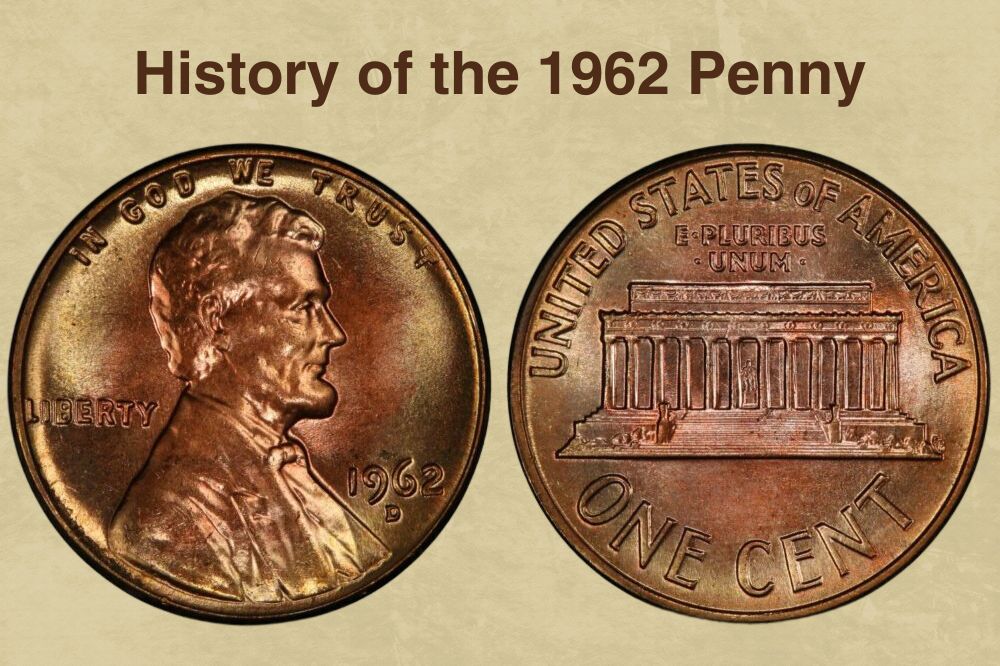
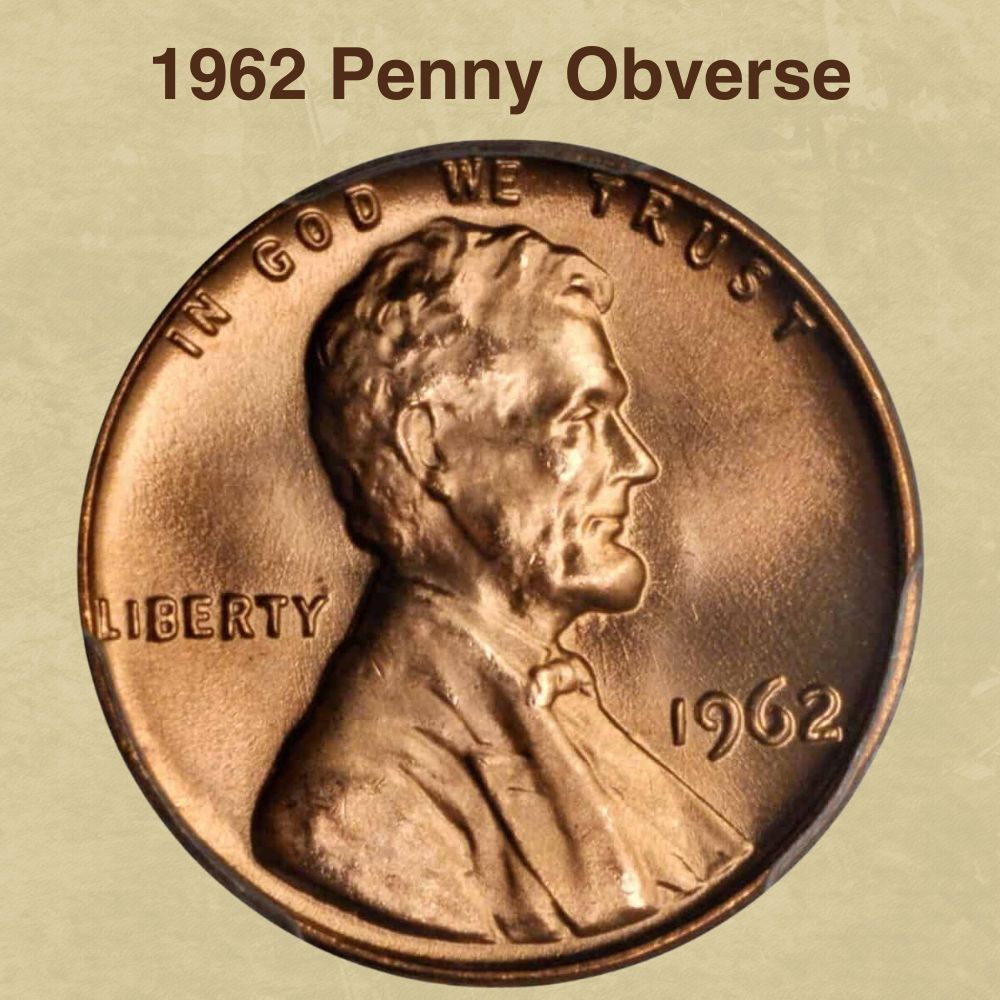
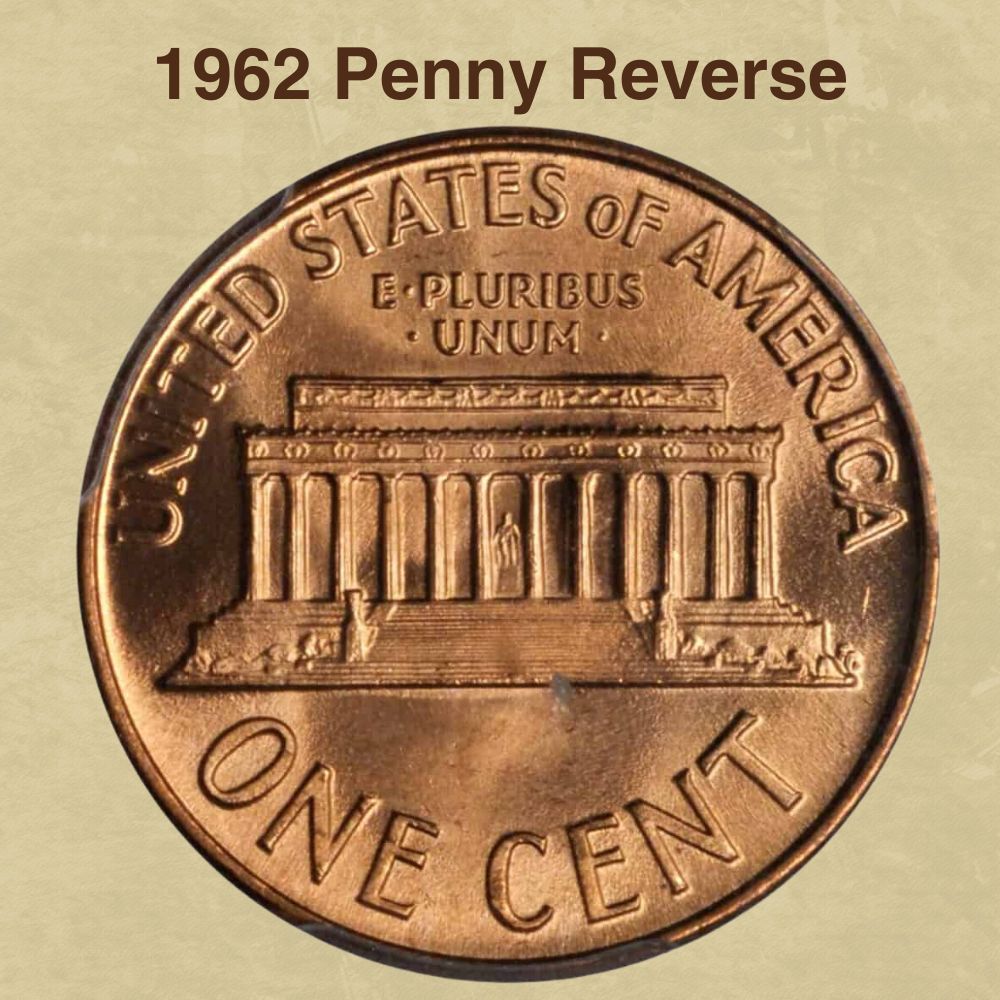
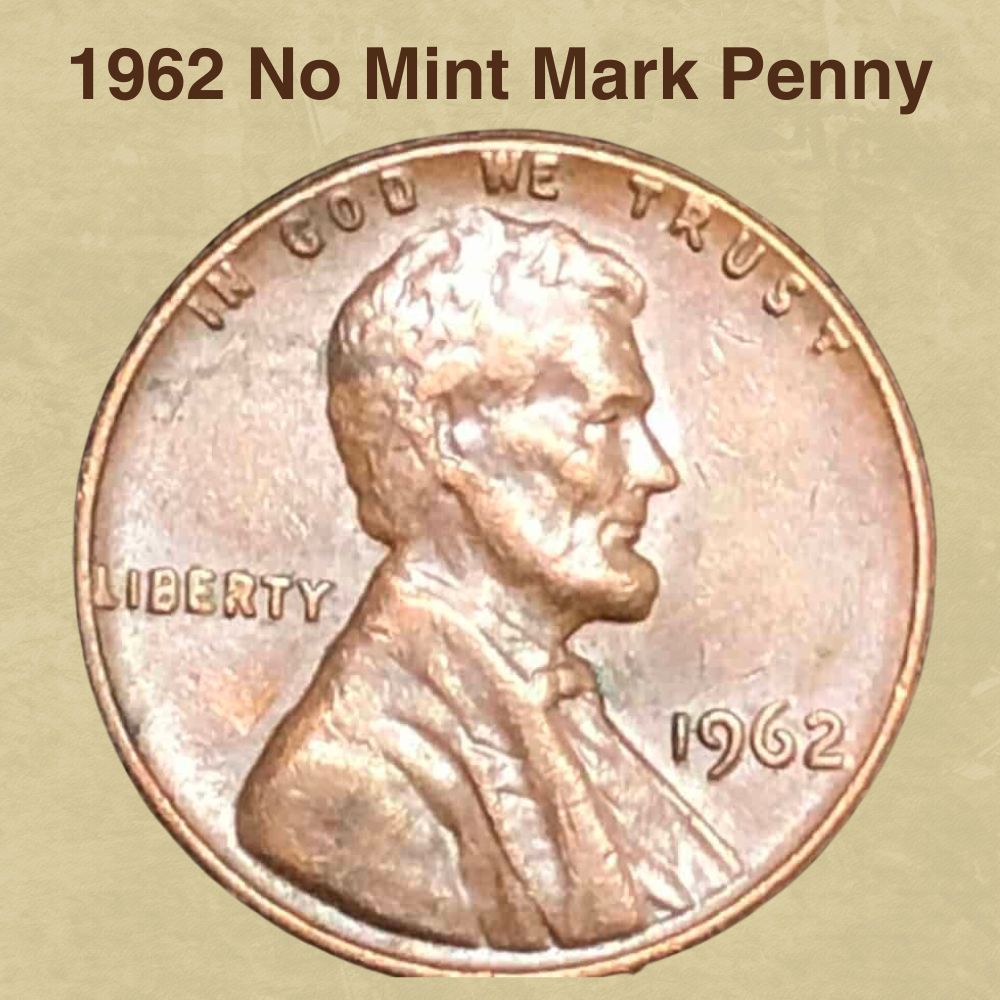
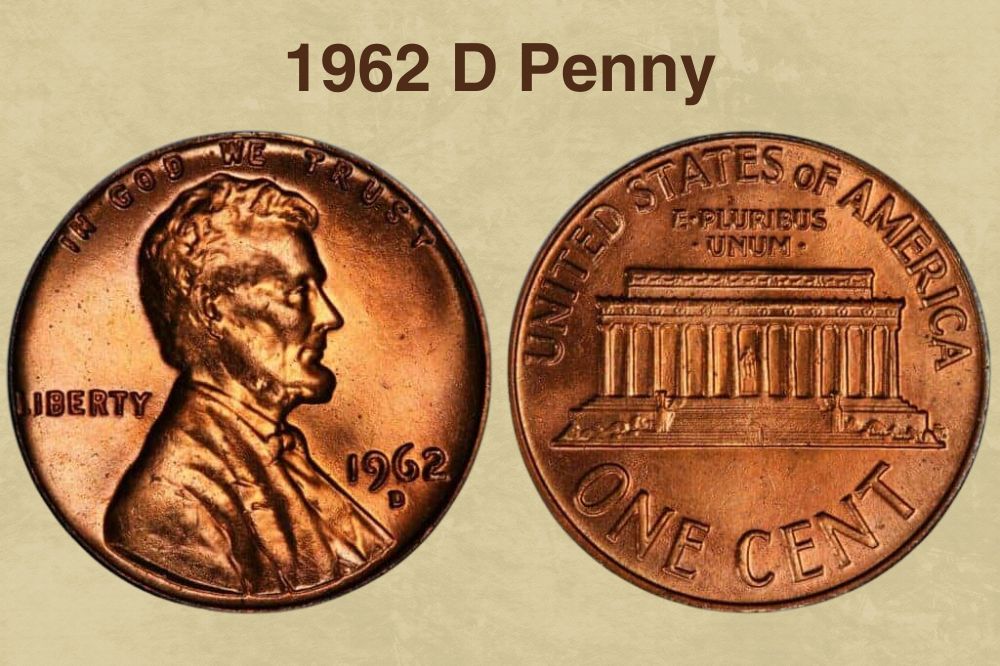
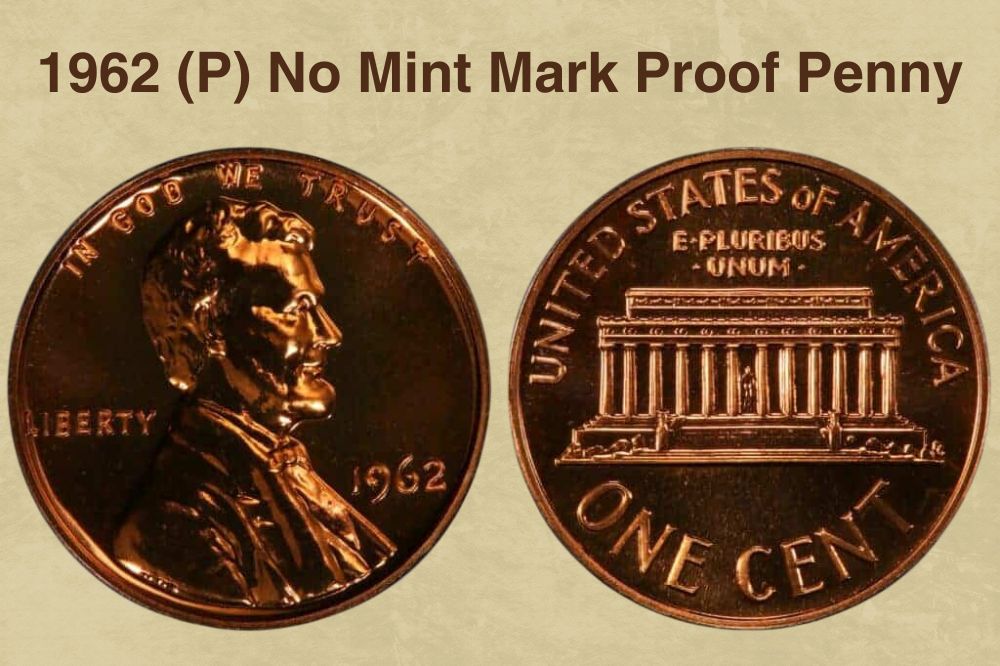
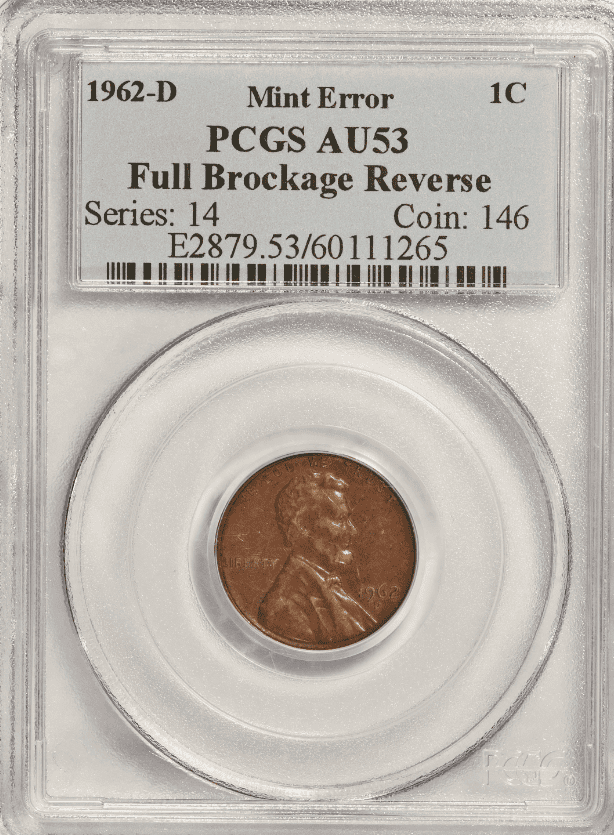
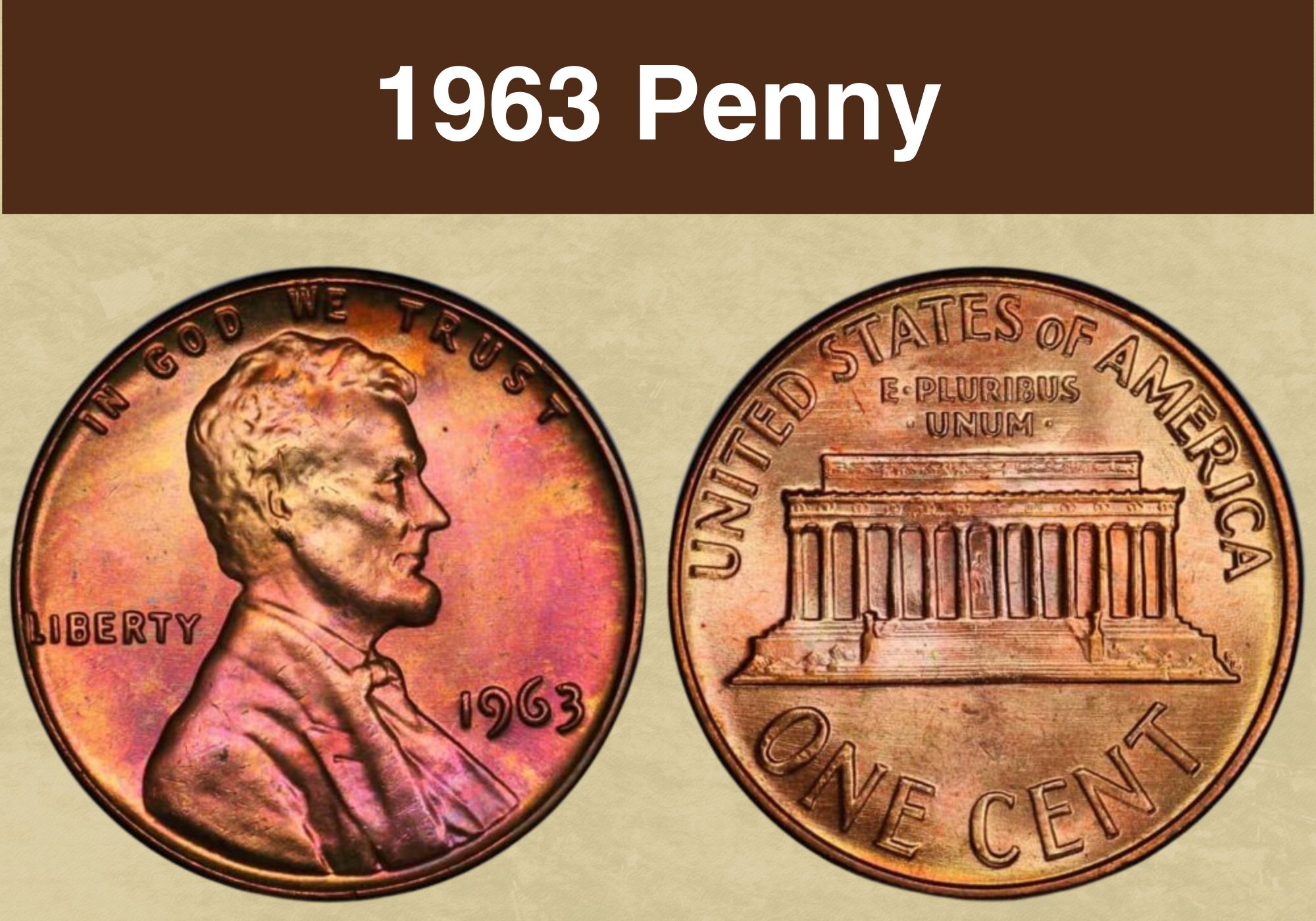
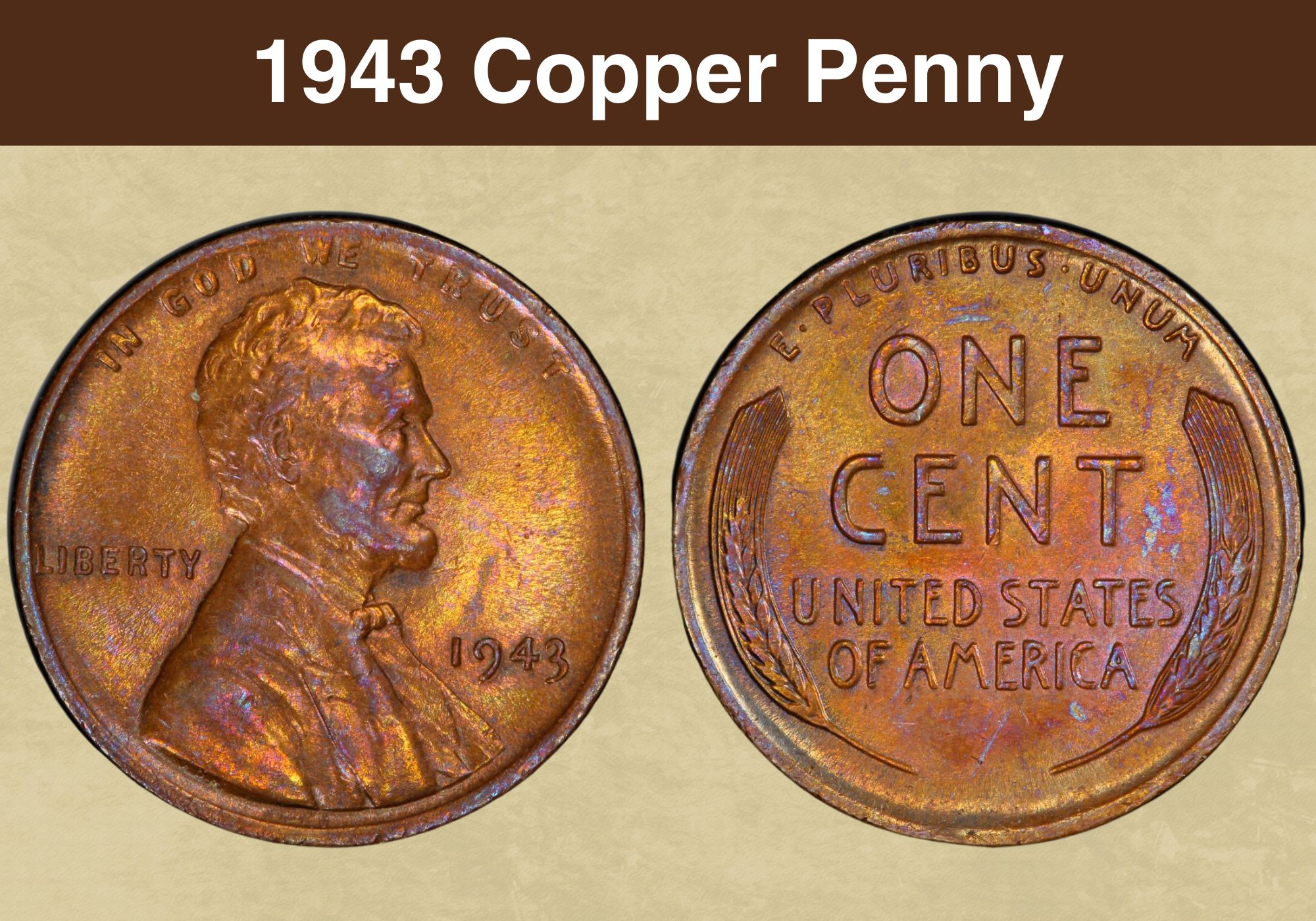
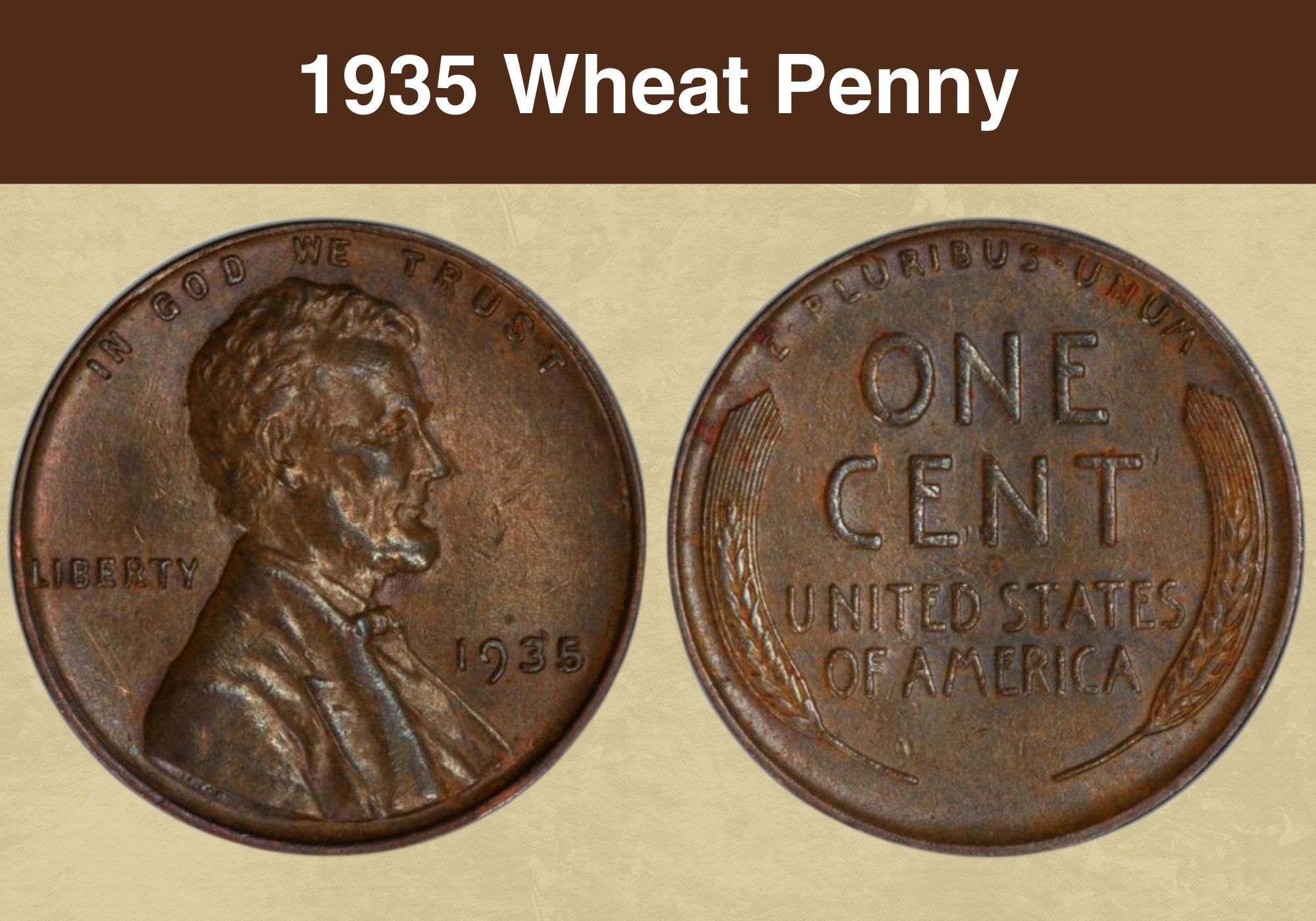
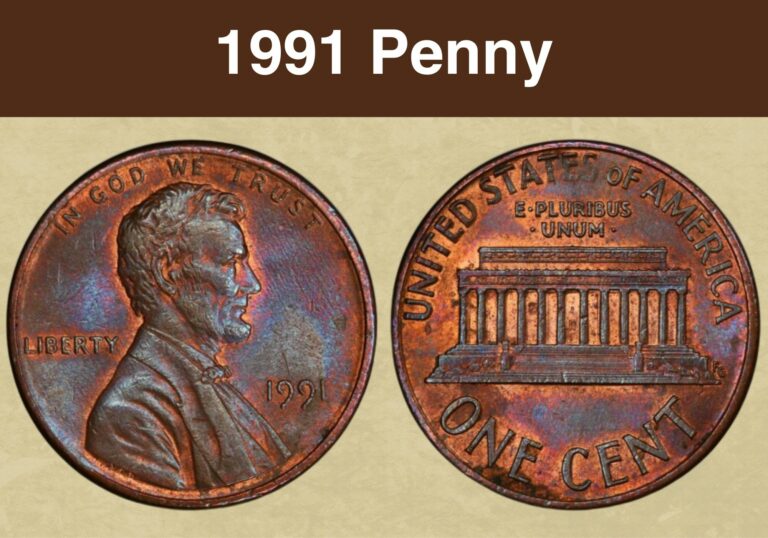
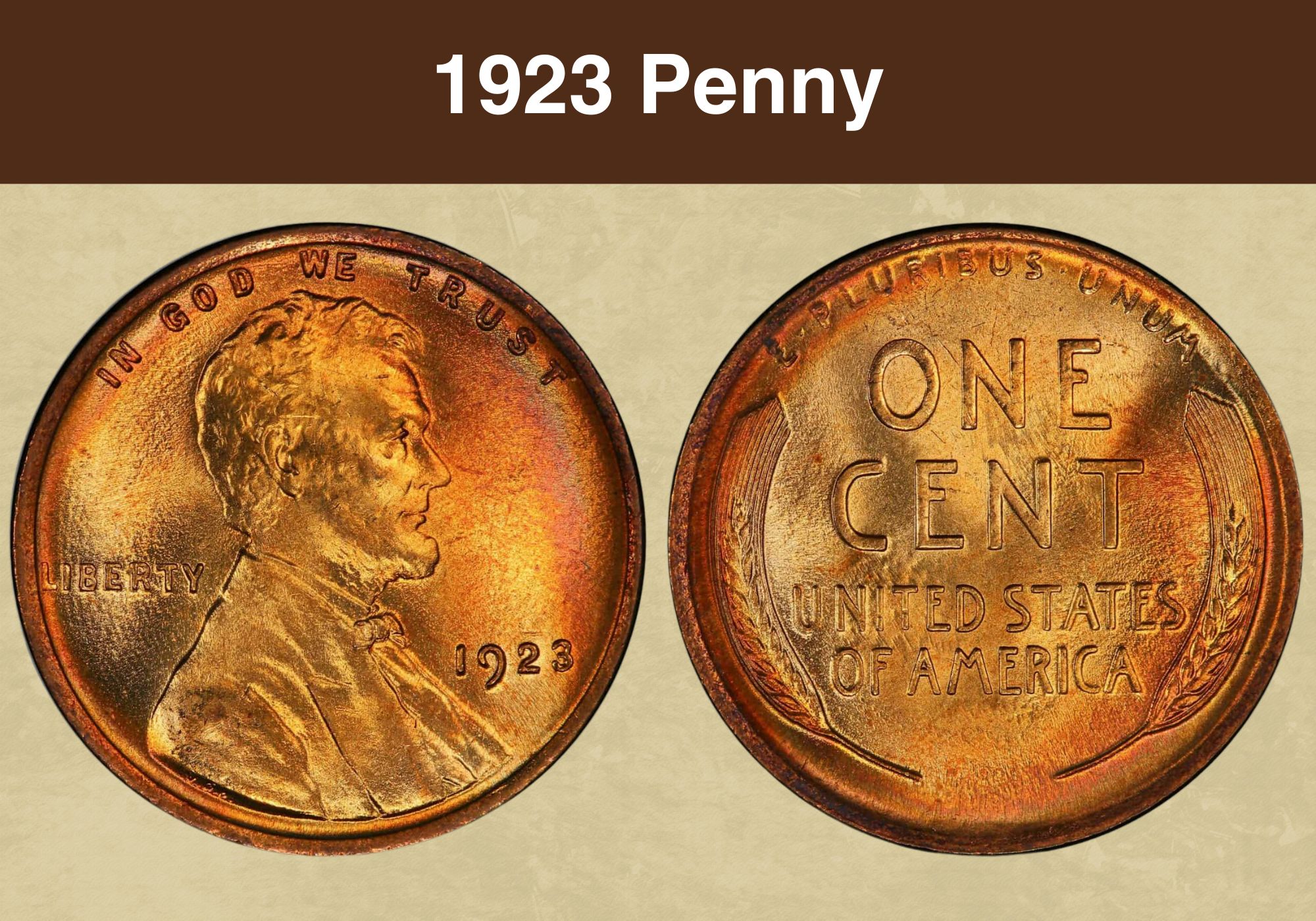
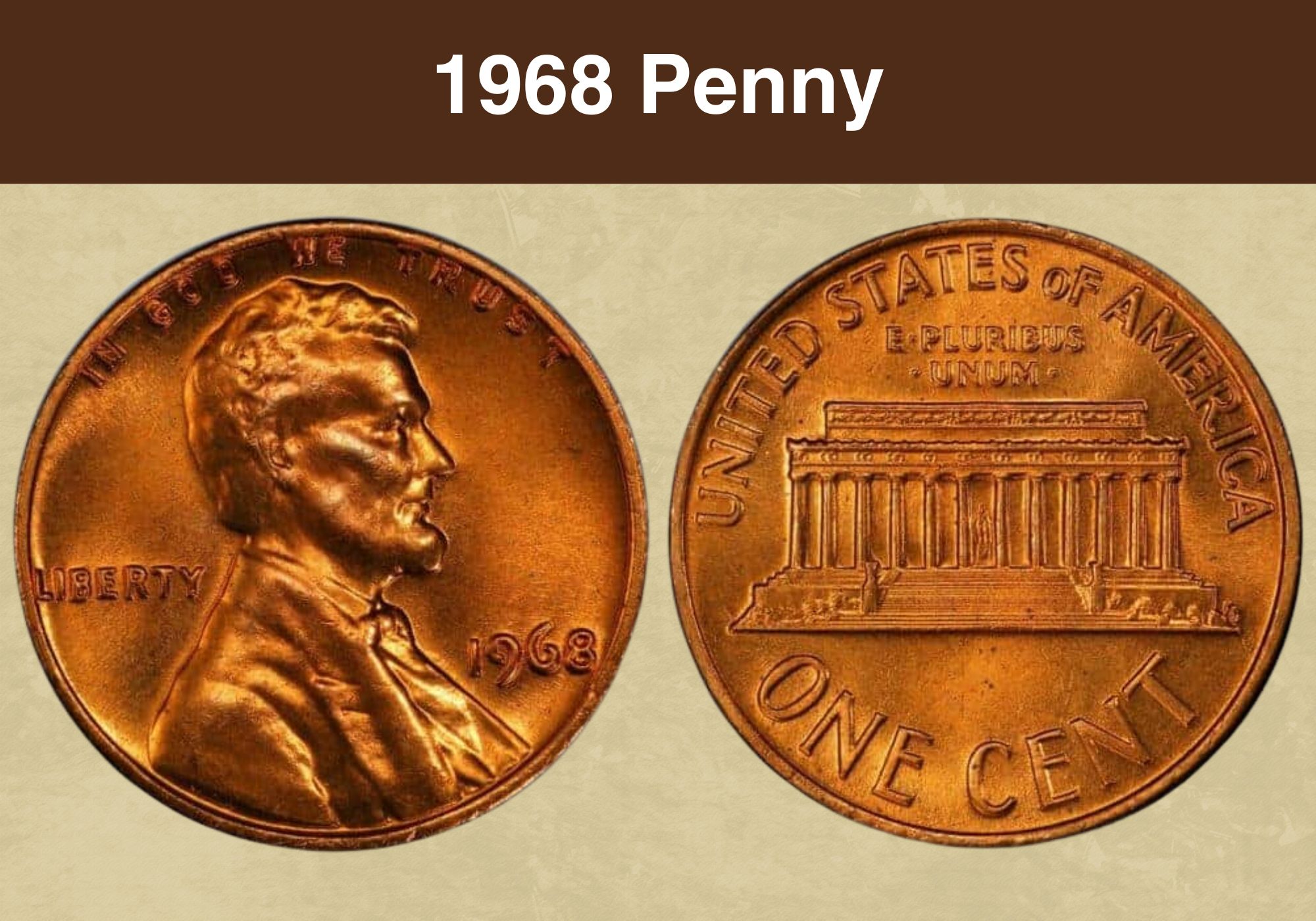
I have a 1962 D penny with no E in front of PLURIBUS is it worth anything?
I have a 1962 S penny is it worth anything please let me know?
I have a 1962 Penny w/ no mint mark graded at PR70 DCAM. How much is it worth?
I have a 1962 d liberty penny the back of it all the letters are backwards is it worth anything
I have an uncirculated roll of 1962 no mint deep cameo pennies. Not sure if errors. But three fell out over the course of the years. What is something like that worth?